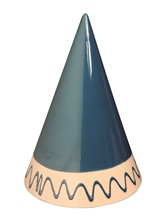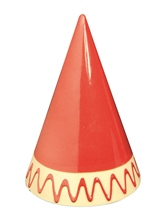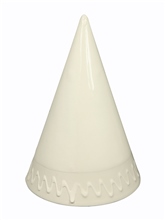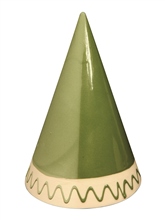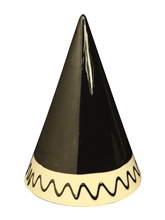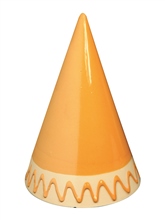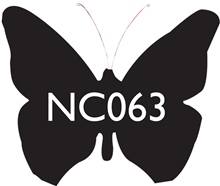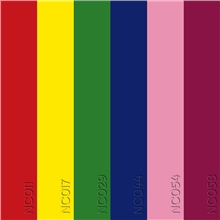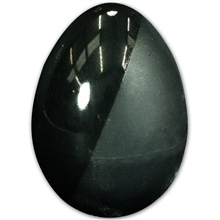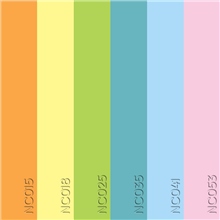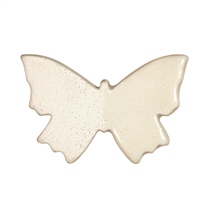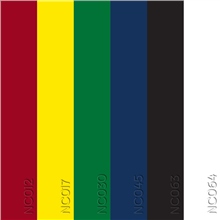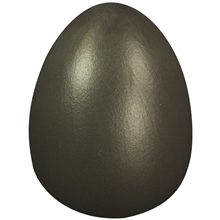Shake well before use.
Slip decoration is among the most popular methods of decoration for pottery and ceramic ware today. There are many methods of application that can be used to produce beautiful results.
Brushing is the most common method of applying slip decoration to the piece. For large areas of decoration a soft flat brush is often used as this leaves fewer brush marks on the piece. For smaller areas a smaller thinner brush may be used to create lines or wording. It is worth noting that more than one coat of slip may be required to create the depth of colour contrast required.
Slip trailing has been of the the most popular methods for application of slip since the 17th century, slip trailing is commonly used to decorate pottery and especially for creating contrast lettering or raised areas on a piece. The process uses a slip trailing tool with varying size nozzles to allow the creation of letters, lines , bands, and images. Use of a turntable is often helpful when using this method.
To cover a large area of the piece with slip this can be done by immersion of the piece into a container of slip and then shaking off the excess. Take care not to leave it immersed for too long or the piece will become fragile and may crack on drying. Alternatively the piece can be covered with slip by pouring slip over the required area using a jug.
Signal Word: Warning
Hazard Pictograms:

Hazard Statements:
H373 - May cause damage to lungs through prolonged or repeated exposure by inhalation.
Precautionary Statements:
P260 - Do not breathe dust
P285 - In case of inadequate ventilation wear respiratory protection
P501 - Dispose of contents/containers in accordance with local regulations
Contains Crystalline Silica ≥1% Respirable when dry
Products contain crystalline silica and therefore are classified as STOT RE2 according to criteria defined in the Regulation EC 1272/2008 and harmful according to criteria defined in Directive 67/548/EEC due to the potential to generate respirable dust. This could arise when the product is allowed to dry out.





